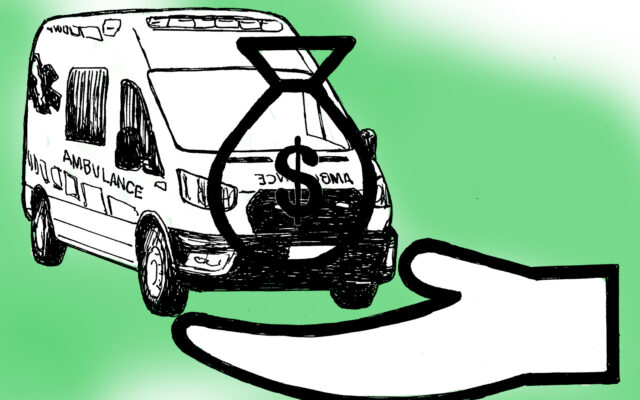
Our system for funding emergency medical services is broken
By Joe Kellner
“If you call us, we will come.” It is a simple but profound promise made every day across our country. In your time of need, if you call 911, someone will come help you.
Over the last several years and as recently as last week, local newspapers have reported that ambulance services are reaching a point where providing services to communities requires additional funding in the form of a subsidy. I contend that these changes are necessary, and we must support them.
About a decade ago, I took over as the leader of Northern Light Medical Transport. During my time there, I became intimately familiar with the finances behind providing ambulance services in Maine. At that time, it was much easier to operate an ambulance service as a sustainable business, where revenues from insurance companies would provide the needed cash flow to run the day-to-day operation as well as reinvest in equipment. It was by no means lucrative, but it was manageable.
Simultaneously, I saw a storm on the horizon. Expenses were steadily increasing by 3 to 5 percent per year, while payments from Medicare and MaineCare often increased by less than 1 percent per year. Although 2023 provided an 8.7 percent increase, that still lagged behind the rate at which costs had increased. In fact, the amount by which Medicare increases payment rates each year is designed to be less than inflation.
With government payers often representing 60 to 70 percent of patients, provision of ambulance service would quickly turn upside down. What once could be made up by better-paying commercial insurance carriers was now a deepening hole.
The cost of readiness is enormous — approximately $1 million per ambulance per year. Couple that with government payers paying much less than cost, many patients being uninsured or underinsured and the decreasing ability to cost shift, the math simply won’t work. With much lower volumes and greater distances to travel, rural communities are disproportionately impacted.
Maine EMS advocates have lobbied and achieved first-in-the-nation wins including passing a law requiring commercial insurance carriers to pay 200 percent of the Medicare published rate. Additionally, MaineCare rates are now tied to match Medicare rates. Last year, the Maine Legislature allocated $31 million as a temporary fix for EMS. As of this writing, 60 percent of that money is still unavailable due to bureaucratic processes. However, even with that funding, it does not fix the worsening trend of costs exceeding revenues.
Insurance carriers have near unilateral authority to deny payments for calls that, in their opinion, are not medically necessary, even if those calls were the result of a 911 emergency. In almost every case, this results in providers receiving no reimbursement whatsoever. Reimbursement is always capped by payment policy, so ambulance services cannot simply raise their rates to enhance their revenue. There is considerably more work that needs to be done to create sustainable systems.
As I now watch Northern Light Medical Transport from the sidelines, I understand why change is needed. I am confident there is not a single ambulance service in Maine that can survive without subsidy. This just becomes more visible when it is a standalone budget item versus a component of a fire department budget.
Articles published about this change failed to highlight similar actions taken by other providers in Maine. In 2020, an Aroostook County news source shared a proposal of one town to charge $100 to $125 per person. In other communities the subsidies range from $15 per person to $74 per person. As with any service, towns should engage in robust discussions.
However, from my first-hand knowledge, Northern Light Medical Transport provided an extremely high level of care, and their leaders and providers care deeply about every patient in every community they work with. They train hard. They have been well ahead of the curve in terms of wages. Through the pandemic, they established programs that actively bucked the trend of workforce shortages by supporting employees’ education.
Provision of emergency medical services in rural Maine can pose certain challenges. Vibrant and open discussion of these issues is critical. Communities should be highly engaged and knowledgeable about the services available to them before they need them, as well as how they are funded and managed. In my analysis and in the context of a broken reimbursement system, $17 per person per year for a high-quality EMS service is a fair deal and should be supported.
EMS is an essential service. Essential services require public funding to sustain the cost of readiness. This will require engagement from legislators (state and federal), advocates, communities and anyone who feels that the promise of EMS remains important.
Kellner is the chief executive officer of LifeFlight of Maine. He has been involved in EMS in Maine for more than 20 years as a volunteer, professional clinician, educator and leader. He has served as past chair of the Maine Emergency Medical Services Board, past treasurer of the Maine Ambulance Association and has participated in both legislative Blue-Ribbon Commissions on Emergency Medical Services.